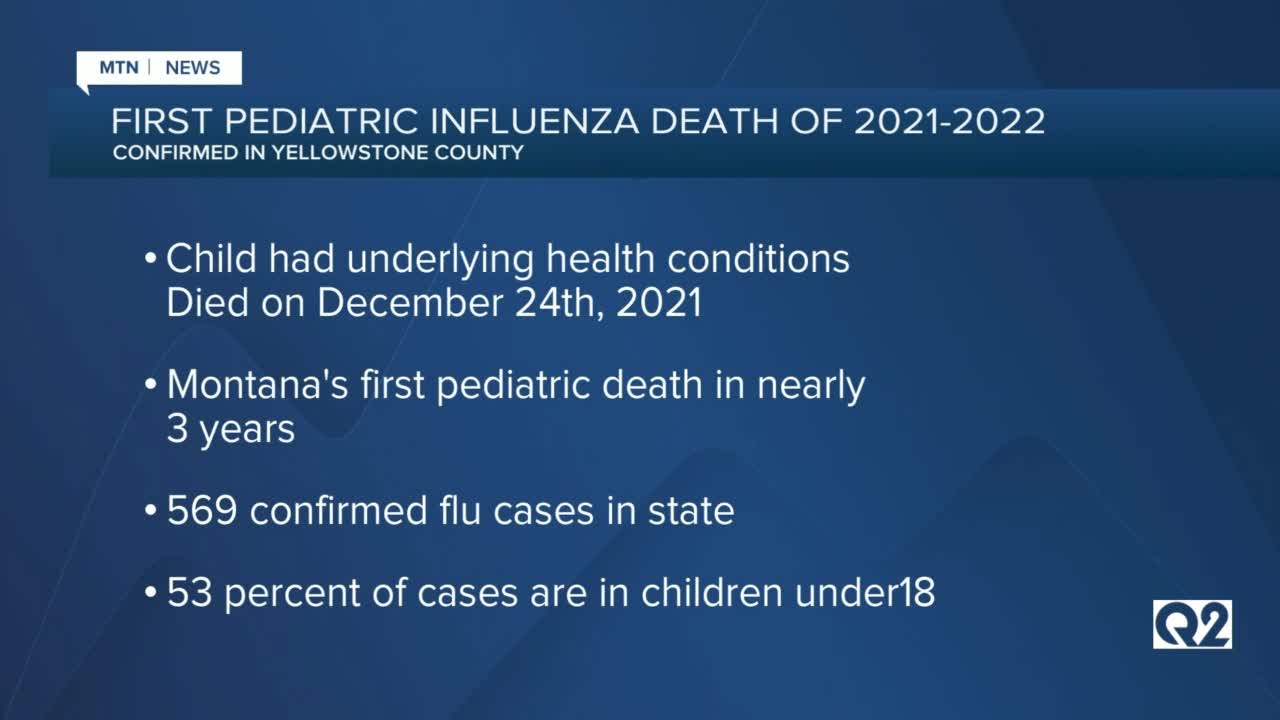BILLINGS - RiverStone Health was recently notified of the death of a Yellowstone County child due to influenza, the health agency said in a press release. The child had underlying health conditions, was not vaccinated against influenza and died on Dec. 24, 2021.
RiverStone Health, in conjunction with the Montana Department of Public Health and Human Services, confirmed that the child's death is the first death and the first pediatric death of the 2021-2022 influenza season in Montana.
Because of confidentiality, RiverStone Health said it does not provide additional details on individual cases.
Nationwide, the Centers for Disease Control and Prevention (CDC) reported no pediatric flu deaths for the week ending December 25, 2021. In Montana, the last flu-related pediatric deaths occurred during the 2018-2019 influenza season when one child under the age of 18 died.
Influenza activity in Yellowstone County and in Montana is increasing with more than 300 reported cases in the county. Fifty-three percent of the cases are in children and teens under 18 years old. As of December 25, 2021, there have been 569 confirmed cases, 35 hospitalizations, and one death reported in Montana. Influenza cases have been confirmed in 35 counties.
It is still early in the flu season and there is still time to get vaccinated. An annual flu shot is the best way to protect against flu and its potentially serious complications. The CDC recommends everyone 6 months and older get a flu vaccine. Influenza vaccines are available at retail pharmacies, medical clinics and by appointment at the RiverStone Health Immunization Clinic 406.247.3382.
While influenza viruses have continued to evolve, to date, this year’s vaccine virus appears to be a good match for the primary influenza strain (H3N2) circulating this year in the US and in Montana. However, more data is needed before a determination can be made on the effectiveness of the vaccine for this flu season.
Influenza spreads through coughing and sneezing. Symptoms can include high fever, chills, headaches, exhaustion, sore throat, cough and body aches. It may take about 1 to 4 days after being exposed to the virus for symptoms to develop. Additionally, you may be able to pass on the flu to someone else a day before symptoms develop and up to 5 to 7 days after becoming sick.
Everyday precautions can help prevent the spread of influenza. Those measures include:
· Getting a flu shot.
· Covering your nose and mouth with a tissue when you cough or sneeze.
· Washing your hands often with soap and water, or an alcohol-based hand sanitizer, if soap and water are not available.
· Avoiding touching your eyes, nose and mouth.
· Avoiding close contact with sick people.
· Staying home for at least 24 hours after your fever is gone except to get medical care or necessities.



